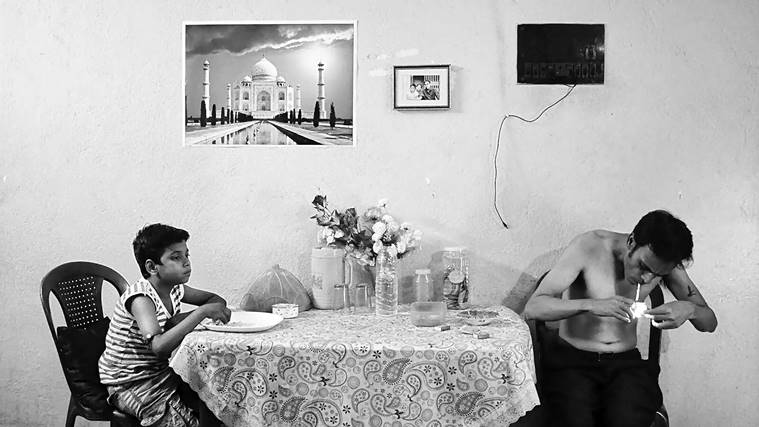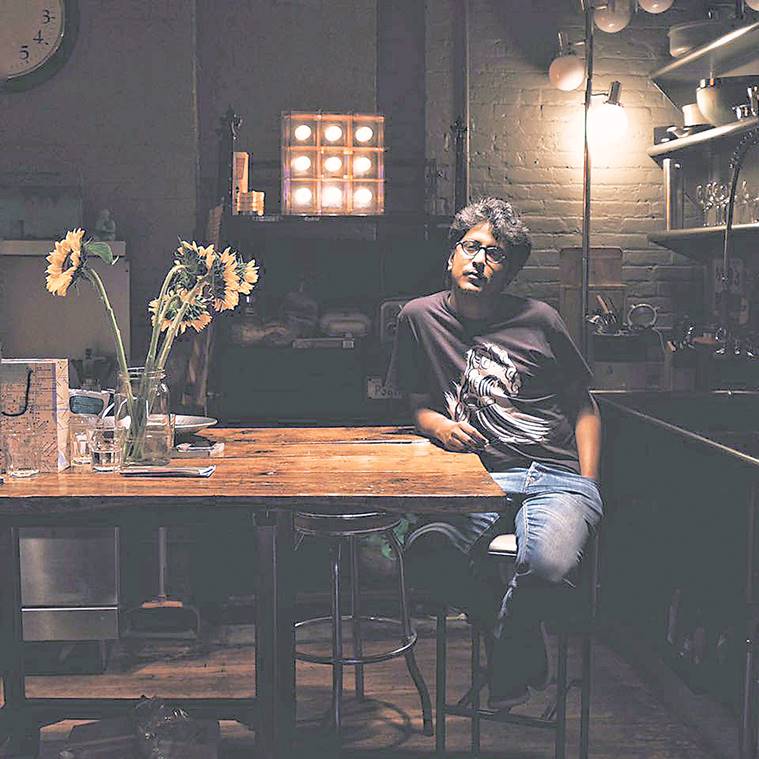
Written by Tatsam Mukherjee
You said you’ll show me the ocean? Why did you bring me to the river?” It’s a loaded question when it comes from an addict, who’s fading off without his next fix. The character features in Cat Sticks, photographer Ronny Sen’s debut film, which presents the black-and-white world of the underground community of junkies in Kolkata. The Bengali feature film premiered at the Slamdance Film Festival last week, and received an honourable mention.
Oscillating between its steely raw narrative is the edginess of Sen’s photographic nuance and the fluidness of its characters’ movements. It is the story of 10 forgotten souls. Sen says, “There was this entire generation of brown sugar addicts in Salt Lake, Calcutta, during the ’90s and the decade later. Some of them survived, but the world at large seems to have forgotten them. People have snatches of memory of seeing someone being beat up on the road, or hearing that their school friend died.” He named the film Cat Sticks because it was a matchstick brand in the ’90s that the brown sugar addicts used.

Sen’s film deals with a chapter from his life that he thinks is being forgotten, which will be completely erased from public memory unless it’s bottled into art. Cat Sticks, which was primarily shot around Salt Lake, feels more ‘experiential’, which didn’t require a ‘ton of research’, he says. These are characters Sen’s grown up around. He’s seen them go to rehab and return, chased by cops and sent to jail. He has seen families collapse around him, and has lost friends to overdose and accidents. “These characters are basically trying to survive one night. They’re from different sections of the society, and they have just one purpose: they want to smoke brown sugar and get high,” he says.
Sen almost sounds like he’s presenting a paper on addiction, as he talks about how the film took shape. “You go to any rehab clinic, out of every 100 people you will find that almost 96-97 people are brown sugar addicts,” he says. He believes the reason why addicts need empathy is because they live in perpetual denial. “The biggest obsession of a junkie is that he/she wants to behave like a normal person, which never happens. And just like an addict, even the co-addict (family member) lives in a similar sort of denial. The addict thinks that the addiction can be managed, while the co-addict thinks my son/daughter will grow out of it.”

Sen is particular that his portray of addiction is authentic without the misinformation often seen in Hindi cinema. “For instance, I was watching a popular Hindi TV series, where they showed characters do drugs with a regular syringe that is used for blood samples. It’s common knowledge that the metallic syringe used by diabetics for insulin is what addicts usually use. It also showed the character doing everything at the same time. He’s doing heroin, he’s also doing cocaine, and he’s drinking too. These are things you don’t mix. Brown sugar is a downer, while cocaine is a stimulant. It’s these little things that no one bothers to get right.” It’s therefore not surprising to see how the film is depicted. The visuals are hard-boiled and unsympathetic, showcasing things how the characters are, without adding any colour to them.
Like most mainstream Indian filmmakers, Sen isn’t out to do the customary ‘don’t do drugs’ message in the end. “Who am I to preach to anyone? I have no social message. I’m trying to show a group of people, who are looked down upon by society. No addict, seeking recovery, needs to die. Respect and empathy are the only two things they need.”
At a time when few films have something to say or care about being authentic, Cat Sticks emerges like a fierce underdog out to win on its own terms, and because of that it changes the game, even if it’s only marginally so. Sen realises the film is a tough watch, without the usual masala, and something that could be dismissed as indulgent, but he seems satisfied with the final cut.
“Drugs are cool in popular media, but no one really gets it. Either there is senseless celebration or unnecessary glorification. There’s a certain kind of macho-ness associated with addiction. It’s such a irresponsible way to depict it. I would have forgotten these stories if I didn’t do something to document it. Another 20-30 years from now, nobody would have any memory it.”